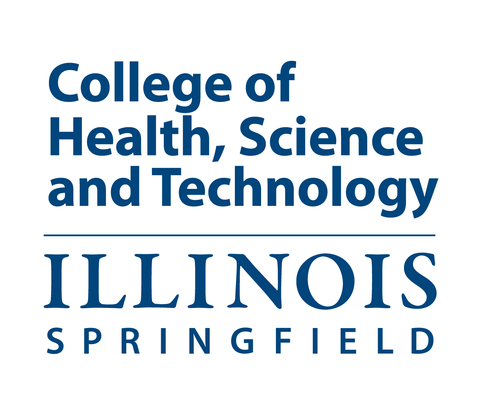Today, mastery of data analytics and organizational health are the backbone of strategic advantage. This week’s journey into the heart of data analytics reveals the critical balance between human intuition and the computational prowess of artificial intelligence (AI), a theme deeply explored in the works of Leonardi and Neely and through the pioneering lens of Heather McGowan.
Deciphering Data: The First Step Towards a Digital Mindset
Data classification organizes information based on set criteria, which is crucial in effective analytics. As Leonardi and Neely suggest, this meticulous sorting is more than just organizational—it's a decision that shapes the future. Misclassification or biased data can skew our perceptions, leading to decisions that may not align with reality. It underscores the necessity of a digital mindset that views data critically, recognizing the potential pitfalls and opportunities it presents.
It’s essential to critically assess classification methods and implement safeguards for fairness and accuracy to prevent bias.
Let’s draw from Tomas Chamorro-Premuzic’s recent article to offer an illustration. Imagine an AI system designed to identify promising job candidates from a large pool of applicants. If this system is trained on data that historically favored specific demographics over others due to unconscious biases, it might replicate these biases. For example, suppose the training data included more successful candidates from a particular university or background. In that case, the AI might unjustly favor similar profiles, overlooking equally or more qualified individuals from diverse backgrounds.
Bias in Algorithms: A Human Conundrum
The influence of bias in algorithms is a crucial concern across many sectors beyond HR, such as criminal justice, where predictive policing tools might unfairly target specific communities, or in lending, where credit scoring algorithms could perpetuate financial inequality. These examples highlight the broader implications of algorithmic bias, underlining the need for a critical approach to data evaluation and an ethical deployment of AI technologies. It emphasizes the universal necessity for a digital mindset that proactively addresses biases to ensure fairness and reality align across all areas of application.
Harnessing Data for Innovation
Understanding and addressing biases in AI and data classification is essential for using data innovatively and ethically. This awareness acts as a springboard, enabling us to harness the transformative power of data across sectors like healthcare and retail.
Tomas Chamorro-Premuzic highlights that while AI often mirrors human biases due to its training on flawed data, it's possible to dissect and modify AI algorithms to pinpoint and correct these biases, enhancing both accuracy and fairness. Unlike AI, human decision-making processes are less transparent, making understanding the biases affecting our choices harder. With the proper adjustments, this point suggests that AI can offer a more transparent and equitable decision-making tool than natural human judgment.
By embracing a digital mindset, as highlighted by Leonardi and Neely, and enhancing our statistical literacy, we position ourselves to leverage data in ways that amplify human potential. This approach, advocated by McGowan, empowers us to overcome biases and tap into the vast opportunities for solving problems and driving progress.
The Statistical Detective: Unraveling Insights from Data
Becoming conversant in statistics is akin to developing a detective’s intuition for clues hidden within data, allowing us to make informed decisions that drive strategic initiatives. First, familiarize yourself with descriptive statistics: mean (the average), median (the middle value), and mode (the most frequently occurring value), which help summarize the data set. Understanding dispersion—through range (the gap between the highest and lowest values), variance, and standard deviation—reveals the spread of data around the average, indicating consistency or variability within the data set.
Inferential statistics, like hypothesis testing and confidence intervals, allow you to extend conclusions from your sample to a larger population, assessing the reliability of your findings. Predictive statistics, such as regression analysis, enable forecasting future events by examining the relationship between variables. Remember, the accuracy of these predictions greatly depends on the quality of data and how it's classified. Approaching data with curiosity and caution ensures your analysis is grounded in a solid understanding of the data's underlying patterns and principles.
Conclusion
As we look to the future, the ability to analyze and interpret data becomes increasingly crucial. But more than that, it's about fostering a relationship with data that is reflective, critical, and informed by an understanding of its broader implications. This ability includes staying abreast of the latest digital tools and technologies that can aid in computational tasks, from AI-driven analytics platforms to advanced statistical software.
Self-Assessment (Can you answer the following questions confidently?)
- Can you explain the difference between mean, median, and mode, and when you might use each to analyze a data set?
- How would you use the standard deviation and range to interpret the variability of a data set, and what does a high standard deviation indicate about the data?
- Describe a scenario where you would use hypothesis testing. What does a p-value less than 0.05 imply about the hypothesis?
- In what situations would regression analysis be appropriate, and how can the quality of the model's predictions be evaluated using R-squared values?
Sources:
Chamorro-Premuzic, Tomas. (2023). 4 science-backed reasons AI is better at predicting your potential in a job. Fast Company.
Leonardi, P. M., & Neeley, T. (2022). The digital mindset: What it really takes to thrive in the age of data, algorithms, and AI. Harvard Business Review.
McGowan, H. E., & Shipley, C. (2020). The adaptation advantage: Let go, learn fast, and thrive in the future of work. John Wiley & Sons.




